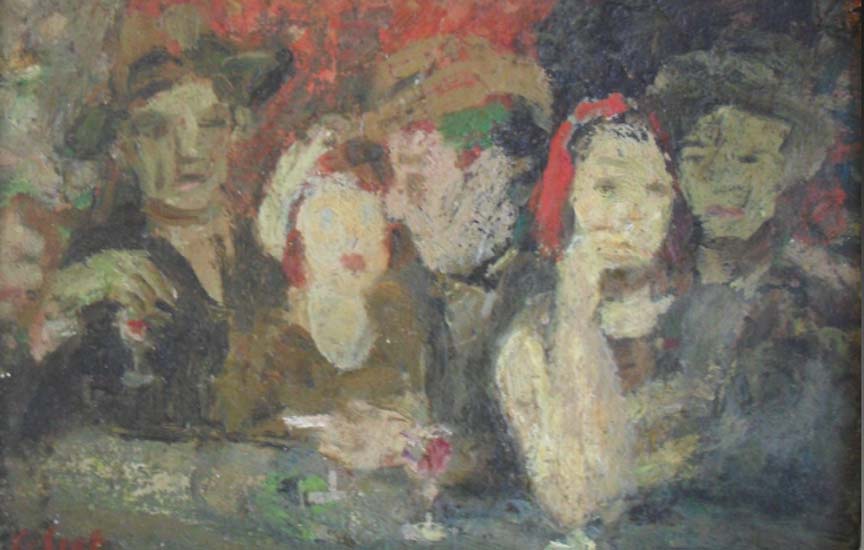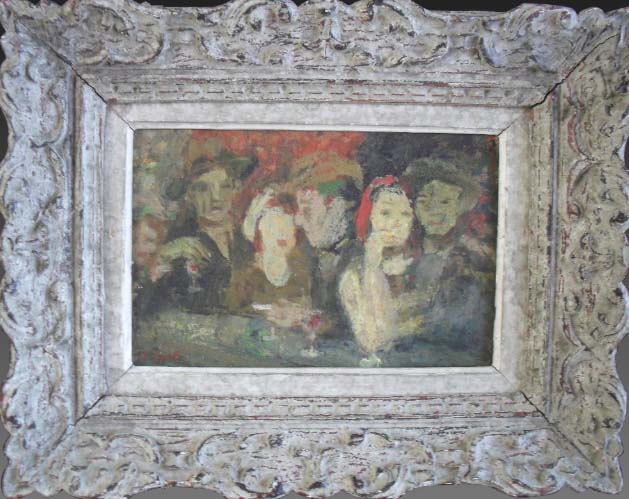

GABRIEL SPAT
"UN VERRE AU COMPTOIR"
OIL ON PANEL, SIGNED, TITLED
AMERICAN, C.1930
6.5 x 9.5 INCHES

Gabriel Spat Spat studied at the Académie des Beaux-Arts in Geneva, as well as in Paris, at the Académie Colarossi and the Académie de la Grande Chaumière. After World War I, he lived in Paris, attending the studios of La Ruche, Soutine and Modigliani. He fled to the USA in 1942. In Paris between the wars, he was known as a painter and sculptor. He executed the portraits of celebrated figures, particularly actors. He also executed anti-German satirical drawings depicting Nazi society. These were destroyed during World War II. Additional Bio: Spat spent most of his career in France painting small oil and watercolor figural works and scenes of leisure life at such locales as racetracks, parks, and beaches. Little is known of the artist's life, but he probably was a native of France. Spat was painting by the age of eighteen, but as an art student in Paris he was so impoverished that he was forced to paint on scraps of canvas given to him by other artists. As a result, he learned to paint in miniature, and he continued to work on a small scale throughout his career. Spat's intimate views of Paris undoubtedly were aimed at the tourist market. They present the city in its most famous and agreeable aspects in such themes as strollers along the banks of the Seine River and blossoming chestnut trees along streets and in parks. Spat fled to the south of France in 1940, during the German army occupation of Paris, but returned two years later. His wartime watercolors reflect the more somber mood of the times, showing German soldiers on parade, rounding up suspected terrorists, and seated in the sidewalk cafés formerly so representative of the leisurely tenor of life in the French capital. In 1943 Spat was able to escape occupied France, and in 1945 he arrived in the United States, where he took up residence in New York City and married. The following year, the Carroll Carstairs Gallery in New York held an exhibition of Spat's watercolors of Paris; several other gallery shows followed in both the United States and Paris. The artist continued to paint Parisian scenes after he left France, using the loose brushwork and bright colors critics described as "impressionist." Spat's paintings occasionally come to light in the American market; thus further information about this shadowy artistic figure eventually may surface.
|